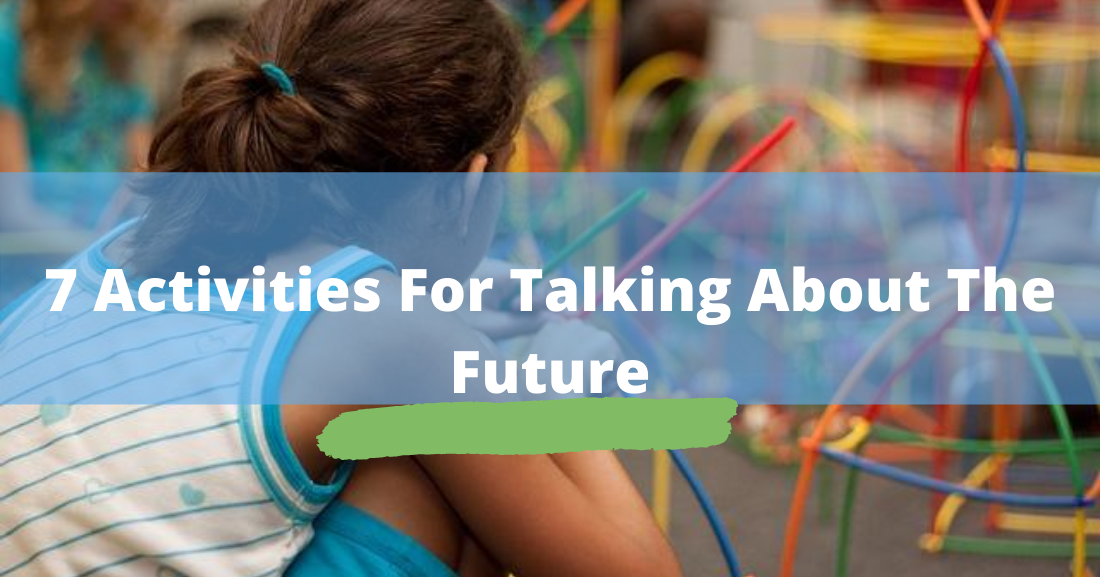Are you going to review future tenses with your students?

Will you find some fun and creative ways to do it? Here are some activities you can use the next time you want to talk about the things that are yet to come.

Try These 7 Activities for Talking About the Future with Your Students
-
1
What the Future Holds
We live in a world that is constantly changing, and every day it seems to change more quickly. In small groups, have your students talk about what they think the future will be like. Start with talking about one year from now. What will be different? What will be the same? Then move on to five years, ten years and fifty years. Finish the activity by having each student write about her own life in the future. Review with your students how to write a personal letter, and then have each person write you a letter describing her life in fifty years.
-
2
Grammatical Chairs
Review the subtle differences between three grammatical structures for talking about the future: present continuous, be going to, and will. Arrange three chairs in the front of your classroom, and label each one either present continuous, be going to or will. Students should then take turns choosing one chair. They should sit in the chair and then use that construction to make up a sentence about the future. Direct students to the correct chairs as needed when they make mistakes. Continue until each person has had at least one turn in each chair.
-

-
3
Oh the Places You’ll Go
Though your class is certainly their favorite place to be (har har), give your students a chance to talk about their vacation plans and practice talking about the future. Before the activity, take several index cards (at least one per student) and write a vacation destination on one side. On the other side, write two things a person might do at that vacation location, one positive and one negative if possible. Give each student one card. On your word, students mingle around the classroom asking their classmates about vacation plans. Students start by asking their partners if they are going to the location for vacation. For example, “Are you going to Paris for vacation?” The second student answers positively. Then the first student asks their partner if they plan to do the activities on the back of the card. “Will you go to the Eifel tower?...Will you eat escargot?...” Partners should answer each question appropriately and then switch roles. When two students have finished their conversation, they find new partners and repeat the process.
-
4
Brown Bagging It
This fun game gives your students a chance to think creatively while using the future tense. Arrange students in a circle, and give one person an empty bag. That person must look into the bag and think of an object that would fit inside it. He then asks the person to his right, “Why do you have a ________ in your bag?” That person then answers using be going to and his plan for the object. For example, an exchange might go like this. “Why do you have a kitten in your bag?”
“I am going to give it to a lonely classmate.” If a person cannot answer a question appropriately or cannot think of a use for the object, he is out of the game and must leave the circle. Continue going around the circle until only one person, the winner, remains.
-
5
More than Words
On the surface, using will in a sentence seems straightforward. One is talking about the future. But the meaning of future sentences using will goes deeper than that. English speakers use ‘will’ for four different reasons: to predict a future event (It will snow in January), to express a spontaneous decision (I’ll do it. I’ll ask him out right now), to show a willingness to do something (We’ll decorate for the dance), and to make a promise (I will call at seven). Before class, make a list of sentences using will, at least two for each reason. After reviewing the four reasons for using will, challenge your students to match each of your sentences with the correct reason. Answer any questions your students might have. Then put students in pairs to write their own set of eight sentences. When everyone has finished, have pairs swap lists and determine which sentence goes with which reason.
-

-
6
Fortune Telling
This silly role play will get your students talking about one another’s futures. If you can, bring in a prop that supposedly has magical powers to predict the future: a crystal ball, a magic mirror, tea leaves, or magical cards. Bring two students to the front of the classroom for a creative role play. Have one student play the fortune teller and look into the magical object or at their partner’s palm. They must then make predictions about the person’s future based on what they “see”. The customer should ask questions about their future as well. Encourage students to be creative and have fun. Once the role play is over, bring another pair to the front for a new role play or have players switch roles. If you like, extend the activity by having each person write about what the fortune teller said using reported speech.
-
7
Pencil Me In
If you are teaching an international class, bring culture into the classroom by having each student plan a vacation for the class in her home country. Ask students to plan a weeklong visit for the entire class to their home country. Each student should think of accommodations, meals and activities. Each student then gives a presentation in which they talk about the vacation that they planned. You should designate the length of the presentation based on their overall English level. Each person should also write up a plan which you should post in the classroom for all to see. After all your students have presented and the vacation itineraries have been posted, have students secretly vote on the one they would choose. (No fair voting for your own.)
These are just a few ways you can review future tenses with your students.
What are some games or activities you already use in class?
P.S. If you enjoyed this article, please help spread it by clicking one of those sharing buttons below. And if you are interested in more, you should follow our Facebook page where we share more about creative, non-boring ways to teach English.







